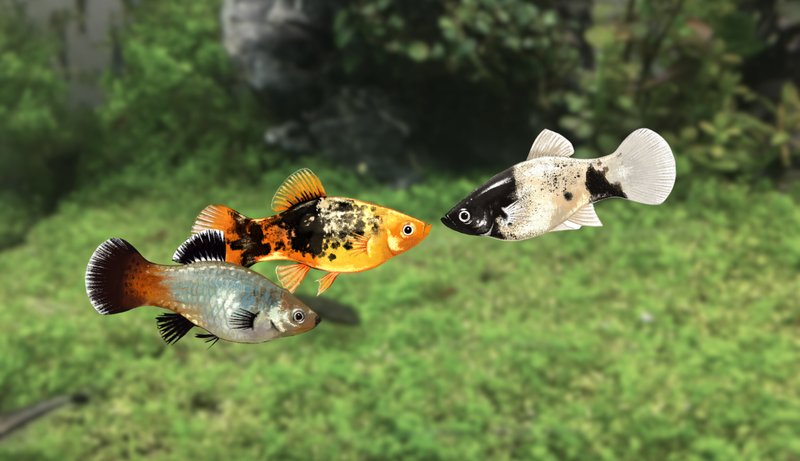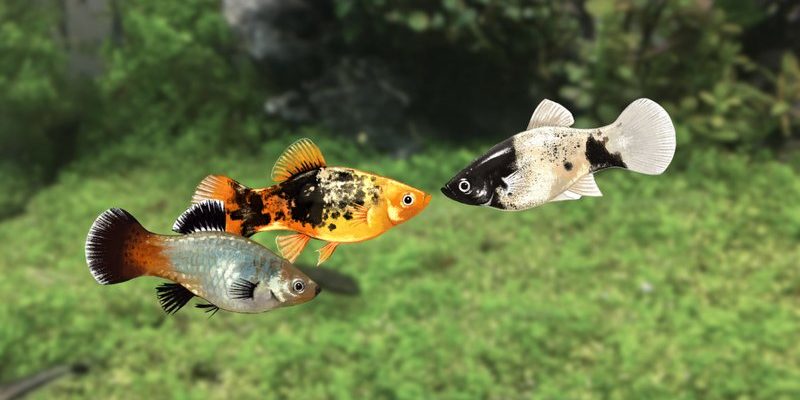
Platies are wonderful pets for beginners. They’re hardy, easy to care for, and often quite sociable. Observing their actions can not only help you provide a better habitat but can also deepen your bond with them. So, let’s dive into the fascinating world of platy behavior! We’ll explore what their different actions mean and what you should keep an eye on.
Understanding Platy Social Behavior
Platies are naturally sociable fish. They thrive in groups and often display school-like behavior. This means you’ll often see them swimming together, darting around playfully. If you notice your platy swimming alone or hiding frequently, it could be an indication that something isn’t right.
In a healthy group, you’ll see them interacting, chasing each other, and even playing hide and seek among decorations. It’s like watching a little underwater drama unfold! Maintaining a group of at least three to five platies is crucial for their well-being. Otherwise, a lonely platy could become stressed, leading to health problems.
When you add new fish to the tank, watch how your existing platies react. A bit of chasing is normal as they establish a pecking order, but excessive bullying can be a sign of dominance that should be addressed. Here’s the thing: if you see one platy constantly fleeing from the others, it may be time to rearrange your setup or even separate them for a bit to reduce stress.
Color Changes and Their Meanings
You might be surprised to learn that platy color changes can be a significant behavior cue. Healthy, happy platies typically exhibit vibrant colors. However, if you notice your platy’s colors fading, it could be a sign of stress or illness. Imagine you’re feeling under the weather and your complexion changes—that’s similar to what your platy is showing you.
Stress can come from various sources: fluctuations in water temperature, poor water quality, or aggressive tank mates. If you see your platy losing color, it’s essential to check the tank’s water parameters and ensure everything is stable. Also, take a moment to observe their surroundings. Sometimes, a simple change in decor or adding some plants for hiding spots can help them feel safe again.
On the flip side, if a female platy is preparing to give birth, she might also display darker or more vibrant colors. This is usually accompanied by a change in behavior as she seeks out a safe spot to drop her fry. If you notice this behavior, be prepared to provide some cover in the tank for her and her babies!
Swimming Patterns: What’s Normal?
Watching platies swim can be mesmerizing, but their patterns reveal a lot about their mood. Normal swimming involves graceful movements, often in a gentle back-and-forth pattern. If you see your platy swimming erratically, darting around the tank, or hanging near the water’s surface, they might be trying to tell you something.
For instance, erratic swimming can signal stress, possibly due to high ammonia levels or bullying. Keep an eye on your platy—if it’s not calming down, it might be worth testing the water conditions or changing the tank setup.
On the other hand, slow swimming or staying near the bottom could indicate lethargy, which might be a sign of illness. If you’ve got a platy that suddenly stops being active, it’s time to investigate: check for signs of disease, examine the water quality, and ensure that their environment is clean and safe.
Feeding Behavior and What It Reveals
Feeding time can be a real spectacle in an aquarium! Platies are generally enthusiastic eaters, darting to the surface as soon as they see you approach. However, if you notice that your platy is ignoring food or eating very little, this could be a sign of stress or health issues.
When feeding, make sure you’re offering a balanced diet suitable for platies. They enjoy flakes, pellets, and even some vegetables! If your platy is eating lesser than usual, re-evaluate the type and amount of food you’re providing. Overfeeding can lead to health issues, while underfeeding can lead to malnourishment.
Keep an eye out for any aggressive behavior during feeding. If one platy hogs all the food and doesn’t allow others to eat, it might be causing stress among the group. Consider feeding smaller amounts more frequently to ensure everyone gets their fair share!
Fin Displays: Communicating Through Body Language
Fish communicate a lot through body language, and with platies, fin displays are a big part of that. A happy platy often shows off its fins fully spread, swimming gracefully around the tank. However, if you notice their fins clamped close to their body, that could indicate stress or discomfort.
During mating season, male platies often puff up and display their fins to attract females. It’s like a little show! But be careful—too much competition can lead to stress for the females. If your tank is small or there are too many males, consider separating them or adding more females to balance things out.
Also, watch for signs of fin damage. If a platy has torn fins or is displaying unusual behaviors like rubbing against objects in the tank, it might be indicating a health issue. That’s a signal to check your tank for any sharp objects and ensure your water conditions are optimal.
The Importance of Environmental Factors
One of the most crucial aspects of understanding platy behavior is recognizing the impact of their environment. Factors like water temperature, pH levels, and tank size play significant roles in how your platies act. An environment that feels safe and comfortable will encourage healthy behaviors, while a poor setup can lead to stress and abnormal actions.
Make sure the water temperature stays between 70°F and 80°F. If it fluctuates too much, your platies may start acting out. Use a heater and thermometer to keep things stable. Also, maintain good filtration and perform regular water changes to keep the environment clean, which is vital for their health.
Platies also appreciate some plants and decorations for hiding spots. A bare tank can lead to anxiety as they feel exposed. Create a little underwater paradise for them to explore! This not only enriches their lives but helps keep stress levels down.
Understanding the behavior of your platy is like peeling back the layers of a fascinating story. Every flick of a fin and change in color can tell you something important about their health and happiness. By paying attention to these behaviors—social interactions, color changes, swimming patterns, and feeding habits—you can create a more harmonious environment for your fishy friends.
As you observe your platies, remember that they thrive in a stable, enriched environment. Regularly check water quality, provide a balanced diet, and ensure they have enough companions in the tank. With a little care and observation, you’ll foster a joyful aquarium that keeps your platies swimming happily for years to come. Happy fish-keeping!

